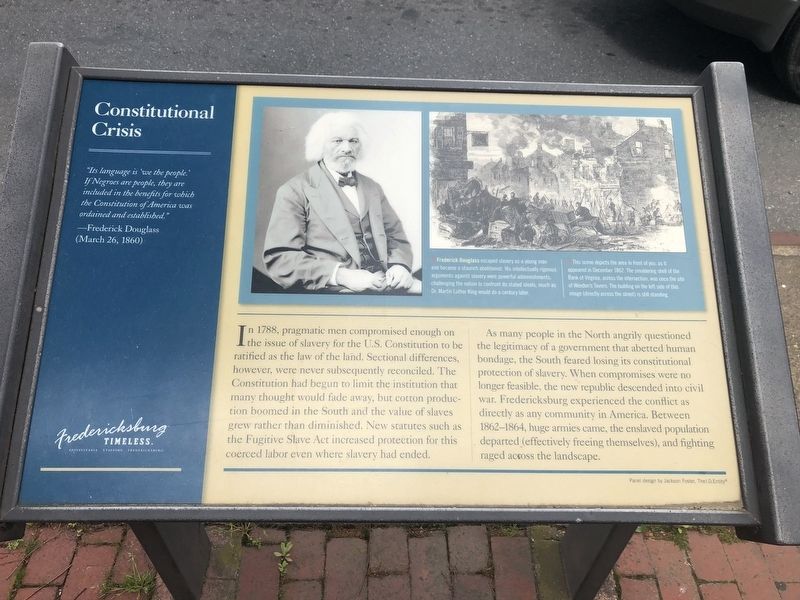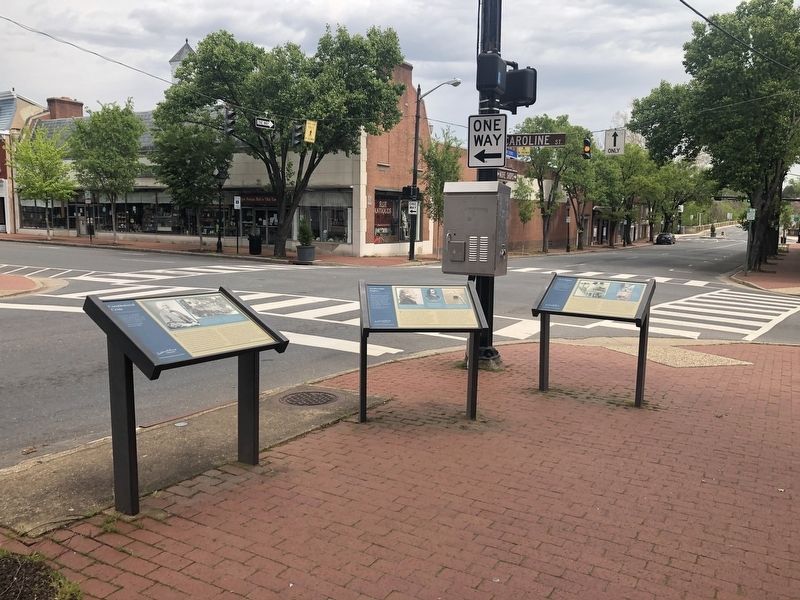Fredericksburg, Virginia — The American South (Mid-Atlantic)
Constitutional Crisis
Fredericksburg: Timeless.
"Its language is 'we the people.' If Negroes are people, they are included in the benefits for which the Constitution of America was ordained and established."
—Frederick Douglass
(March 26, 1860)
In 1788, pragmatic men compromised enough on the issue of slavery for the U.S. Constitution to be ratified as the law of the land. Sectional differences, however, were never subsequently reconciled. The Constitution had begun to limit the institution that many thought would fade away, but cotton production boomed in the South and the value of slaves grew rather than diminished. New statutes such as the Fugitive Slave Act increased protection for this coerced labor even where slavery had ended.
As many people in the North angrily questioned the legitimacy of a government that abetted human bondage, the South feared losing its constitutional protection of slavery. When compromises were no longer feasible, the new republic descended into civil war. Fredericksburg experienced the conflict as directly as any community in America. Between 1862-1864, huge armies came, the enslaved population departed (effectively freeing themselves), and fighting raged across the landscape.
[Captions:]
Frederick Douglass escaped slavery as a young man and became a staunch abolitionist. His intellectually rigorous arguments against slavery were powerful admonishments, challenging the nation to confront its stated ideals, much as Dr. Martin Luther King would do a century later.
This scene depicts the area in front of you, as it appeared in December 1862. The smoldering shell of the Bank of Virginia, across the intersection, was once the site of Weedon's Tavern. The building on the left side of this image (directly across the street) is still standing.
Erected by Fredericksburg Economic Development and Tourism Office.
Topics and series. This historical marker is listed in these topic lists: Abolition & Underground RR • African Americans • Civil Rights • War, US Civil. In addition, it is included in the Virginia, Fredericksburg: Timeless. series list. A significant historical month for this entry is December 1862.
Location. 38° 18.217′ N, 77° 27.583′ W. Marker is in Fredericksburg, Virginia. Marker is at the intersection of William Street and Caroline Street (Business U.S. 17), on the right when traveling east on William Street. Touch for map. Marker is at or near this postal address: 200 William St, Fredericksburg VA 22401, United States of America. Touch for directions.
Other nearby markers. At least 8 other markers are within walking distance of this marker. Civil Rights (here, next to this marker); Inalienable Rights (here, next to this marker); A Moment in Time: Circa 1925
Credits. This page was last revised on February 2, 2023. It was originally submitted on April 12, 2020, by Devry Becker Jones of Washington, District of Columbia. This page has been viewed 153 times since then and 11 times this year. Photos: 1, 2. submitted on April 12, 2020, by Devry Becker Jones of Washington, District of Columbia.

